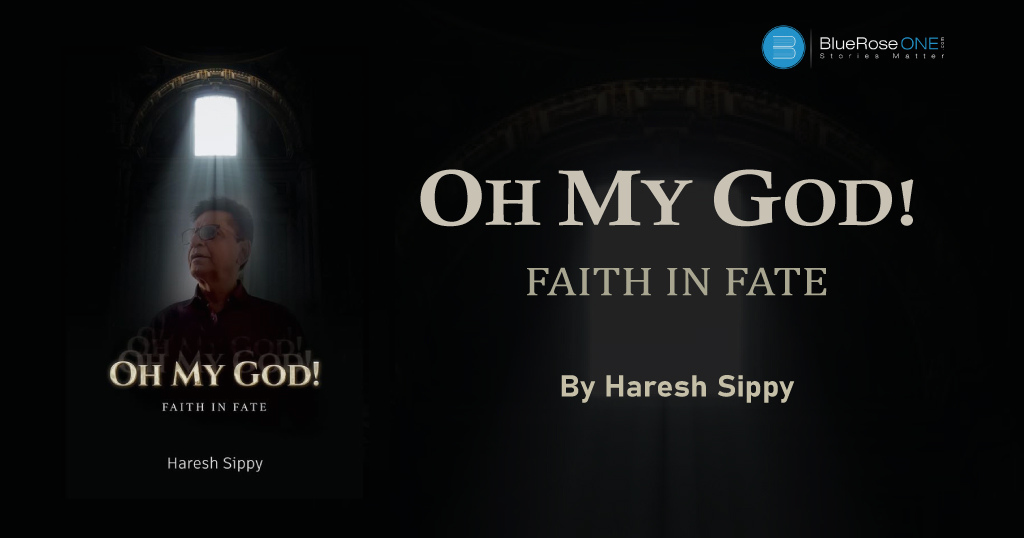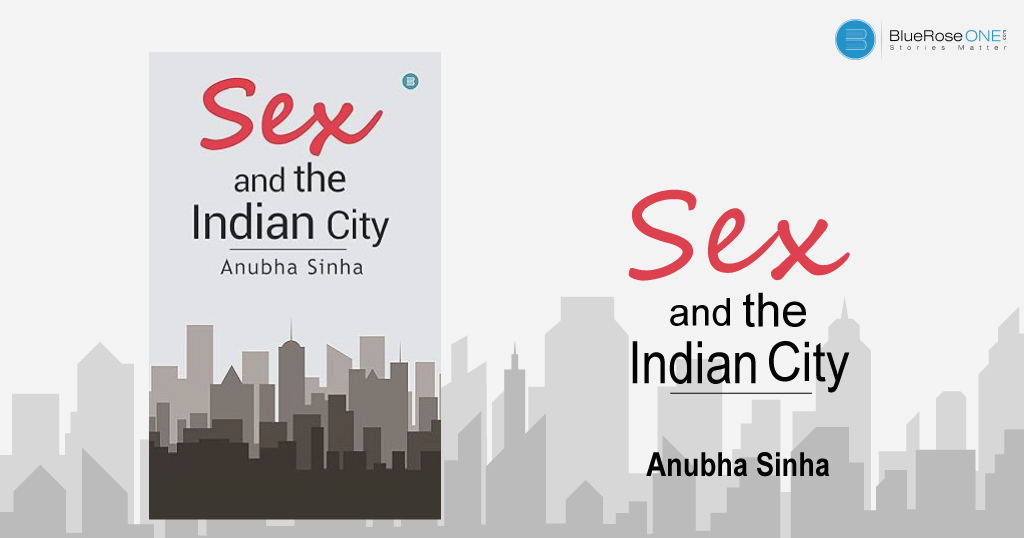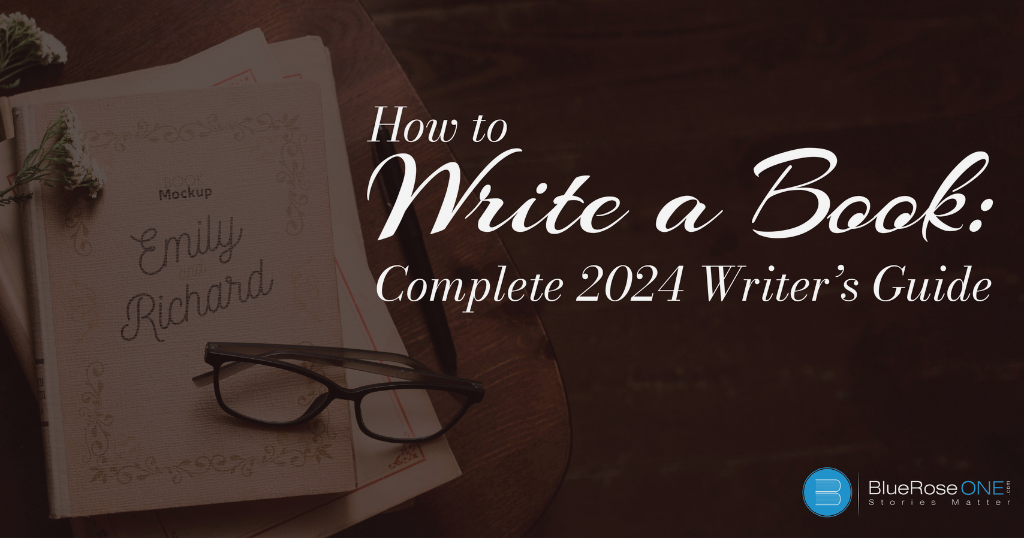
How to Write a Book: Complete Step-by-Step Guide – 2024
Do you feel like you have a lot of thoughts jumbled up in your mind and want to say it all? Why not try writing it in a book? Writing a book is as easy as tedious it sounds – confusing right? Thinking about writing a book is a contemplative journey that begins with a spark of inspiration and a canvas of limitless possibilities. The desire to craft a narrative, whether fiction or nonfiction, often works as a motivating factor within, beckoning writers to start on a literary journey. The process of contemplating a book involves introspection, ideation, and a profound connection with one’s inner storyteller. What exactly do you wish to write? The pivotal first step for any writer involves predefining the target audience for their book. This crucial decision shapes the narrative, tailoring it to the specific readership that the author envisions. Additionally, writers must make a conscious choice regarding the genre or category of their book, be it fiction or nonfiction. This decision entails determining whether the work falls into the nonfiction world, like a self-help guide, biography, or historical account, or if it aligns with a fiction category, encompassing genres such as science fiction, fantasy, mystery, or romance. For instance, a writer might opt to create a collection of poems, short stories, or delve into flash fiction—concise narratives that unfold in just a few minutes. Another intriguing genre is creative nonfiction, also known as literary journalism. This unique style blends factual accuracy with fictional techniques, introducing elements like character development and scene setting. Regardless of the chosen genre, both the content and style must harmonise with the expectations of the intended audience. This thoughtful alignment ensures that the narrative resonates effectively with readers, delivering an experience that meets their expectations. Select a couple of paths of genres to choose from Choosing the type of book may commonly act as a preparatory step in refining the main topic, and the two phases are typically linked since the type of book chosen may indicate a certain concentration. The core of a good book is its concentration, which writers achieve by intentionally restricting their theme. This technique allows them to focus on important aspects while discarding unnecessary information. Employing reporting questions, such as who, what, when, where, and how, can help you concentrate. For example, if a writer intends to create a historical fiction work set in a specific century, the genre (historical fiction) naturally directs attention towards studying the complexities of that historical period. To guarantee a rich and well-rounded story, the writer may ask reporting questions like when and where the events take place, who the main players are, and how historical facts interact with fictitious components. This technique not only refines the topic but also identifies areas that may need extra study, context, or historical background. Brainstorm the themes and sub-genres The brainstorming phase stands out as the most creative part of the book-writing process. Writers here break free from the restraints of precise syntax and punctuation, allowing their thoughts to flow freely and forge unorthodox connections. It is a phase of research in which associative leaps lead to unexpected pathways or inventive connections. The emphasis is on exploration and letting creativity flow freely. For example, if a writer intends to create a science fiction novel, the brainstorming session may include investigating futuristic themes, imagining alternate universes, and considering the influence of new technology on society. During this stage, the writer is not concerned with organising or polishing their thoughts. Instead, it’s about gathering material, giving structure to first ideas, and determining what pieces are already relevant to the book and which require more development. In science fiction, brainstorming might result in the invention of new alien species, creative technology, or unexpected outcomes of scientific achievements. The purpose is to encourage a free-flowing exchange of ideas, allowing the writer to unearth unexpected facts or a new viewpoint. At this stage, the emphasis is on creativity and experimentation, laying the groundwork for the more organised phases of writing that will come later. You may also like: Negative Adjectives to Describe People: Examples and Meanings Plan your book. With a well-defined concept in hand, the next crucial step is to meticulously plan the structure of your book. Consider the opening and closing chapters, and deliberate on the central portion, which constitutes the heart of your content. Break down your book into logical sections or chapters, outlining the focus of each segment. For example, if you’re planning to write a mystery novel, envision how you want to start and conclude the story. Deliberate on the key plot twists and character developments that will unfold in the middle of the narrative. By structuring your book in this way, you provide a roadmap for both yourself and your readers, ensuring a coherent and engaging storyline. Research Research serves as a vital component for both fiction and non-fiction works. Even in the realm of fiction, ensuring believability and realism is paramount. In non-fiction, thorough research is indispensable to guaranteeing the accuracy and currency of the information presented. Conduct comprehensive research by delving into books, articles, and relevant materials tied to your chosen topic. Capture essential details in your notes, laying the groundwork for a well-informed and credible narrative. Consider a scenario where you’re crafting a historical fiction novel set in a specific era. Your research might involve exploring the cultural nuances, historical events, and societal norms of that time period. This attention to detail enhances the authenticity of your narrative, making it more compelling for readers. You may also read: Negative Adjectives to Describe People: Examples and Meanings Start the writing process Now that your research and planning stages have reached fruition, it’s the opportune moment to set pen to paper and commence the writing process. An essential reminder: Your initial draft doesn’t demand perfection. The primary objective is to translate your well-conceived ideas into written form. Disregard concerns about grammar intricacies or sentence structure during this phase; the emphasis is solely on giving…

Learn How to Sell Books Online in 2024: Essential Guide
Beginning the road to selling books online is a dynamic endeavour that requires a deliberate combination of digital acumen, e-commerce savvy, and persuasive marketing brilliance. Creating a noticeable online presence is the cornerstone of success for authors and publishers alike in the wide digital world. It entails not just displaying literary works but also creating an immersive experience that entices potential readers. Using e-commerce platforms like Amazon or specialty platforms like Etsy gives up new avenues for connecting with a worldwide audience, offering a marketplace where literary works may find their appropriate audience. However, the art of online book sales extends beyond the realms of transactional exchanges. Effective marketing strategies play a pivotal role in amplifying visibility, enticing prospective readers, and building a loyal readership base. From search engine optimisation (SEO) to leveraging social media dynamics and exploring paid advertising avenues, the modern author must navigate a multifaceted terrain to ensure their literary endeavours flourish in the digital marketplace. Read: Get an Idea on How to Write a Book Dedication: Best Effective Tips to Follow In this intricate dance of technology and creativity, the journey of selling books online unfolds as a harmonious symphony, where the resonance of captivating narratives meets the algorithms of discoverability and consumer engagement. Here’s a step-by-step guide: Create a professional website Utilize e-Commerce Platforms Optimise for Search Engines (SEO) Build a Mailing List Social Media Marketing Offer Discounts and Promotions Collect and Showcase Reviews Create Author Profiles Explore Paid Advertising Participate in Book Fairs and Events Provide Excellent Customer Service Stay Informed and Adapt Create a Professional Website Creating a good website is the first step towards establishing a strong online presence for your books. The website acts as a central point for potential readers to learn about your work, browse your catalogue, and contact you as an author. It is critical to have a user-friendly interface that allows users to effortlessly move around your site. A clean design with a visually attractive layout and high-quality book covers improves your online platform’s overall aesthetics and professionalism. Furthermore, with an increasing number of visitors accessing material via smartphones and tablets, optimising your website for mobile devices is critical. A mobile-friendly design provides visitors with a smooth and engaging experience, enhancing engagement and increasing the possibility of converting browsers into readers. Utilize e-commerce platforms Using renowned e-commerce platforms allows your books to reach a large online audience. Millions of consumers trust platforms like Amazon, eBay, and Etsy, which provide an easy and familiar atmosphere for potential purchasers. Creating thorough product listings is critical for effectively promoting your books. Create captivating book descriptions that entice readers, add high-quality cover photos that visually reflect your work, and include essential metadata to improve searchability. By partnering with these renowned e-commerce platforms, you have access to their current user base as well as their powerful infrastructure, which includes secure payment processing and dependable delivery choices. This method not only simplifies the purchase procedure for clients, but it also provides legitimacy to your books because they are shown with other respected publications in the store. Optimise for Search Engines (SEO) Implementing SEO best practices is crucial for enhancing the visibility of your website and book listings in search engine results. This involves strategically incorporating relevant keywords into your book titles, descriptions, and metadata. By aligning your content with what readers are searching for, you improve your chances of ranking higher in search engine results pages. Optimising for SEO not only makes your books more discoverable but also establishes your website as a credible source, ultimately driving organic traffic. Regularly updating your content, improving page load speed, and ensuring mobile friendliness are additional aspects of SEO that contribute to a better overall user experience. Build a mailing list Establishing an email list is a powerful tool for connecting directly with potential readers and building a community around your work. Offer incentives such as exclusive content, early access to new releases, or special discounts to encourage visitors to subscribe. A well-nurtured mailing list allows you to maintain an ongoing relationship with your audience, keeping them informed about upcoming releases, author events, and other relevant updates through newsletters. Building this direct line of communication not only fosters reader loyalty but also provides a platform for personalised engagement, turning one-time buyers into long-term fans. Social media marketing Using social media networks to market your books is a dynamic and successful method. Platforms such as Instagram, Facebook, Twitter, and Pinterest provide several options to interact with your target audience. Distribute visually engaging information such as book covers, behind-the-scenes peeks, and reader feedback. Respond to comments, participate in relevant conversations, and launch targeted advertising campaigns to reach certain demographics to actively connect with your audience. Social networking may help you create your author brand, increase visibility, and foster a sense of community among your fans. You may also like: Unlocking Success: How to Sell Books Online Effectively Offer discounts and promotions Entice potential buyers by strategically running limited-time promotions, discounts, or bundle deals. Creating a sense of urgency around these offers encourages immediate purchases. This marketing strategy not only attracts new readers but also retains existing ones, fostering a sense of goodwill. Promotions can be communicated through various channels, including your website, email newsletters, and social media platforms. Consider aligning promotions with specific events, holidays, or book-related milestones to maximise their impact. Well-executed discount and promotion campaigns can drive sales, increase visibility, and generate buzz around your books in a competitive online marketplace. Collect and showcase reviews Encouraging readers to leave reviews is a crucial aspect of building credibility and influencing potential buyers in the competitive world of online book sales. Positive reviews not only serve as testimonials but also act as social proof, assuring potential customers of the book’s quality. By creating a review-friendly environment on your website and prominent e-commerce platforms, you invite readers to share their experiences and opinions. These reviews contribute to an organic, positive image for your book, attracting more potential readers. As…
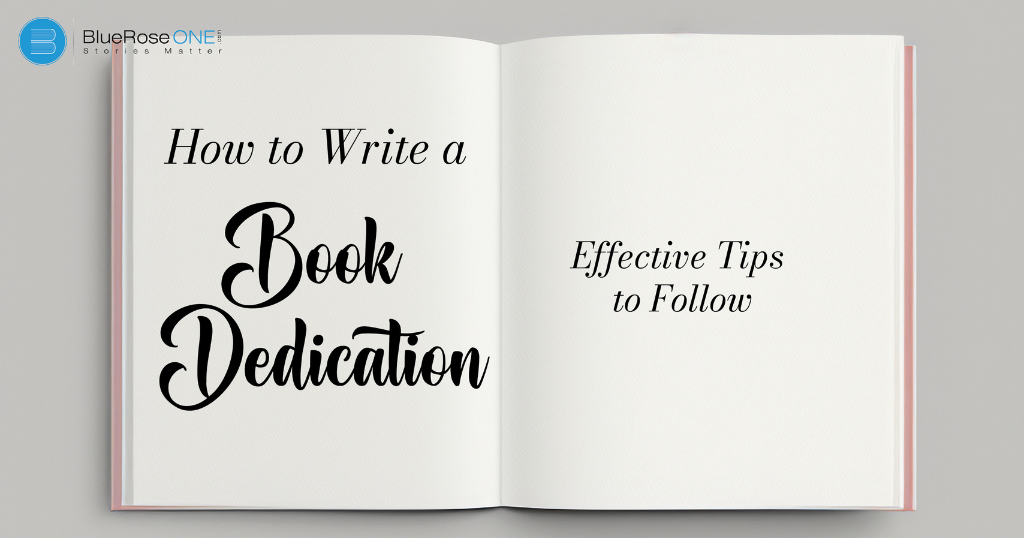
How to Write a Book Dedication: Best Effective Tips to Follow
What is a Book Dedication? A dedication in the context of a book is a part in which the author communicates their unique thoughts, thanks, or recognition to persons or groups who have personal value in their lives or who have contributed to the development of the book. It is a means for the author to express gratitude, affection, or respect to people who have had a significant effect on them or the project. Dedications are often found at the beginning of a book, typically on the dedication page, which is usually located on one of the opening pages before the main content of the book begins. The language used in dedications can vary widely, ranging from formal and traditional to more personal and creative expressions of thanks. Some authors use dedications to honour family members, friends, mentors, or anyone who has inspired or supported them during the writing process or in their personal journey. Dedications add a personal touch to a book, and they provide insight into the author’s relationships and the emotional connections that influenced their work. You may also like: Positive Character Traits And Why They Are Crucial In this comprehensive guide, we will explore effective tips to help you write a compelling book dedication. Understand the Purpose of a Book Dedication Identify Your Audience Reflect on Your Journey Choose the Right Tone Be specific and personal Prioritise and include key individuals Consider dual dedications Incorporate quotes or poetic elements Review and edit thoughtfully Express Gratitude Without Obligation Understand the Purpose of a Book Dedication Before you begin writing, it’s critical to understand the objective of a book dedication. Dedication pages are usually included at the opening of a book and are used to commemorate people who have inspired or supported the author. This might include family members, friends, mentors, or anybody who has provided support along the way. You may also like: Is Kindle Direct Publishing right for Your Next Book? Identify Your Audience When writing the dedication, keep your readership in mind. If your book is aimed at a certain audience, have your dedication reflect that. Whether you’re writing for a general audience or a specific market, make sure your tone and substance are appealing to your readers. Reflect on Your Journey Take a moment to reflect on your writing journey. Consider the challenges you’ve faced, the triumphs you’ve celebrated, and the individuals who stood by you during both highs and lows. Your dedication should encapsulate the essence of this journey. Choose the Right Tone The tone of your dedication sets the emotional tone for the entire book. Decide whether you want it to be heartfelt, humorous, or a mix of both. A sincere and genuine tone often resonates well with readers, creating a connection that goes beyond the pages of your book. Be specific and personal Avoid generic statements. Instead, be specific about why you’re dedicating the book to certain individuals. Share anecdotes, inside jokes, or personal experiences that highlight the depth of your relationship with the dedicatees. This personal touch adds authenticity to your dedication. You may also like: How to Write An Epilogue: Step-By-Step Guide Prioritise and include key individuals If you have numerous people to acknowledge, prioritise them based on their impact on your writing journey. Include the most significant individuals first, gradually expanding to others. This ensures that the dedication remains focused and heartfelt. Consider dual dedications If multiple individuals have played crucial roles, consider a dual dedication. This involves dedicating the book to two or more people, each with a distinct acknowledgment. This approach is especially effective when the individuals have different relationships with the author. Incorporate quotes or poetic elements Enhance the literary appeal of your dedication by incorporating relevant quotes, poetic elements, or lines from your own work. This adds a layer of artistry to the dedication, making it not only a gesture of appreciation but also a captivating introduction to your book. Review and edit thoughtfully Once you’ve drafted your dedication, review and edit it thoughtfully. Ensure that the language is clear, concise, and free of errors. Consider seeking feedback from trusted friends or colleagues to gain insights from different perspectives. You may also like: List of 15 Prestigious Literary Awards in 2024 Express Gratitude Without Obligation While it’s common to express gratitude, avoid making your dedication feel like an obligation. Be sincere in your acknowledgments, and let the words flow naturally. Forced or insincere dedications can be apparent to readers. Here are some examples of book dedications from various genres: Simple and Personal: for my wife, who believed in me from the start. Gratitude: To my parents for their unwavering support and love. In Memory: In loving memory of [Name], whose passion for literature inspired this work. For a Special Someone: For [Name], my muse and my constant source of inspiration. Family Dedication: To my children, who remind me every day of the magic in the world. From “A Brief History of Time” by Stephen Hawking: This book is dedicated to Jane, Robert, and Timothy.“For Jane, with loveFor Jane, with whom I have lived almost half my life. And for Robert and Timothy, without whom it wouldn’t have been worth living.” From “Harry Potter and the Deathly Hallows” by J.K. Rowling: The dedication of this book is split in seven ways:To Neil,To Jessica,To David,To Kenzie,To Di,To Anne,and to you,if you have stuck with Harry until the very end. From “Eat, Pray, Love” by Elizabeth Gilbert: This book is dedicated to everyone who has ever had a heartache and to every person who has had the courage to pursue his or her own path.To everyone who has walked into the middle of nowhere and realised that his or her own path home has been the entire journey and has changed their life because of it:. From “The Book Thief” by Markus Zusak: For Elisabeth and Helmut Zusak, with love and admiration.“It is said that your life flashes before your eyes just before you die. That is true; it’s called life.”“Death…

What Is Biblical Fiction? Complete Guide For New coming Authors
Biblical fiction is a distinct literary genre that combines aspects of historical storytelling with biblical-inspired storylines. In this genre, authors reinterpret, interpret, or build on biblical stories, characters, and events, merging factual and imaginative aspects to create captivating narratives. In contrast to religious scriptures or commentaries, biblical fiction utilises artistic licence to explore the hidden experiences, views, and emotions that may lie beyond the surface of the biblical events. Key Features of Biblical Fiction: Historical Authenticity: Authors in this genre frequently perform extensive study to achieve historical correctness in presenting biblical locales, civilizations, and traditions. The idea is to immerse readers in the historical setting while also allowing for creative narrative. Creative Interpretation: While biblical fiction is based on historical events, it allows for artistic interpretation. Authors may fill gaps in the biblical narrative, offer fresh viewpoints on well-known tales, or even incorporate fictitious characters to enrich the overall story. Exploration of Themes: The genre provides a platform to explore a wide array of themes present in the Bible. Themes such as faith, resilience, morality, and human nature are often central to biblical fiction, offering authors opportunities to delve into the complexities of the human experience. Character Development: Biblical fiction often involves the in-depth exploration and development of characters found in the Bible. Authors may provide backstories, motivations, and emotions to characters, adding depth and nuance to their personalities. Respectful Approach: Given the sacred nature of the Bible, authors approach their subjects with a delicate balance of respect and creativity. While taking liberties with the source material, successful biblical fiction maintains a sense of reverence for the religious and historical significance of the stories. You may also link: Book Writing Tools That Actually Make a Difference Why Biblical Fiction Matters: Cultural Engagement: Biblical fiction engages readers in a cultural dialogue, encouraging them to connect with ancient stories in a new and relatable way. It bridges the gap between contemporary readers and the historical context of the Bible. Exploration of Faith: For those with a religious background, biblical fiction provides a fresh perspective on familiar stories, prompting readers to reflect on their faith and consider alternative interpretations. Literary Exploration: Beyond religious contexts, biblical fiction offers literary enthusiasts a unique genre that combines elements of historical fiction, drama, and storytelling. It adds diversity to the literary landscape by drawing on ancient narratives. Timeless Relevance: The themes explored in biblical fiction—such as love, sacrifice, and resilience—are timeless and resonate with readers across different cultures and belief systems. 5-Step for the Beginners who are planning to delve in the world of Biblical Fiction Here’s a 5-Step list for the beginners to delve in the world of biblical fiction. Step 1 – Defining Biblical Fiction Step 2 – The Intersection of History and Imagination Step 3 – Exploring Themes and Characters Step 4 – Navigating Sensitive Topics with Respect Step 5 – Finding Noteworth Biblical Fiction Works Step 1: Defining Biblical Fiction Biblical fiction, a captivating literary genre, takes readers on a journey through the corridors of time, intertwining creative storytelling with the sacred narratives of the Bible. It encompasses novels and stories that unfold against the rich tapestry of biblical events, infusing life into ancient tales while introducing imaginative elements. At its core, biblical fiction maintains a delicate balance between historical and creative dimensions. Authors delve into the sacred texts, extracting characters, settings, and events, and then weave them into compelling narratives. This genre doesn’t merely retell stories; it reimagines them, offering fresh perspectives and filling gaps left by the biblical accounts. The essence lies in the fusion of historical authenticity with the author’s creative interpretation, providing readers with a literary experience that resonates with both the familiar and the unexpected. For instance, Anita Diamant’s “The Red Tent” transports readers into the biblical world of Dinah, Jacob’s daughter, offering a unique perspective on her life—an angle not extensively explored in the Bible. Diamant’s creative narrative breathes new life into a character often relegated to the sidelines, exemplifying how biblical fiction can illuminate untold stories and amplify the richness of the biblical tapestry. You may also like: Fantasy Books complete publishing guide in India 2024 Step 2: The Intersection of History and Imagination Biblical fiction stands as a testament to the harmonious intersection of historical authenticity and creative imagination. Authors delve into meticulous research, immersing themselves in the rich tapestry of biblical times to ensure a vivid portrayal of the era. This dedication to historical accuracy creates a solid foundation, allowing readers to step into ancient landscapes and witness cultural nuances with a sense of authenticity. Take, for instance, the biblical narrative of Noah’s Ark. While the Bible provides a succinct account of the flood and the ark’s construction, biblical fiction allows authors to breathe life into the story. Through exhaustive research, an author might depict the architectural marvel of the ark, incorporating historical details about construction techniques and materials used during that period. This blend of historical precision forms the backdrop against which creative imagination flourishes. In the hands of a skilled author, the ark becomes more than a vessel; it becomes a symbol of human resilience and divine intervention. Characters aboard the Ark, historically rooted, take on dimensions of personality and emotion that resonate with readers. This intersection allows biblical fiction to transcend mere historical reenactment, offering readers a captivating journey that fuses the lessons of the past with the artistry of creative storytelling. As readers traverse the pages, they find themselves not only immersed in history but also transported by the imaginative spirit that breathes new life into timeless tales. Step 3: Exploring Themes and Characters Biblical fiction serves as a dynamic literary canvas for authors to explore a diverse range of timeless themes and characters embedded in the Bible. One prominent theme frequently explored is the resilience of biblical heroes facing adversity. Through creative interpretation, authors can delve into the emotional and psychological landscapes of characters such as David facing Goliath, unravelling the untold facets of their journeys and portraying…
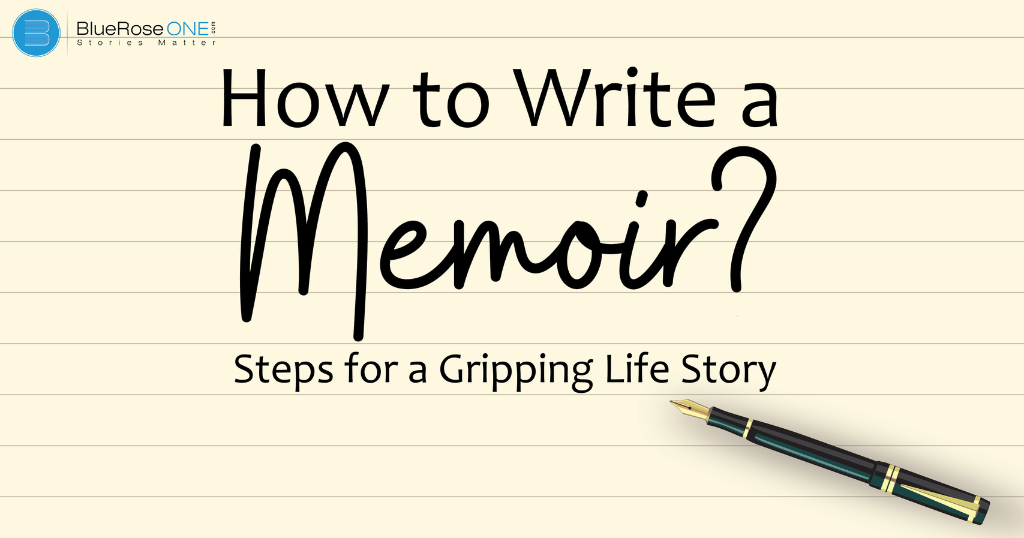
How to Write a Memoir: Steps for a Gripping Life Story
What is a Memoir? A memoir is a nonfiction story about a certain time, topic, or feature of someone’s life. It is an intensely intimate story that digs into the author’s recollections, feelings, emotions, and reflections. A memoir, as opposed to an autobiography, focuses on specific events, relationships, or experiences in order to portray a greater truth or understanding. Read: What is an ISBN number? Things to Know about Publishing Industry! It frequently combines storytelling with personal reflection, encouraging readers to connect on an emotional and empathetic level with the author’s experience. Memoirs provide a distinct viewpoint, expressing the essence of a life via vivid storytelling and an intimate investigation of the author’s experiences. What all includes in a Memoir? Here’s a list of things that are included in a Memoir – Personal Experiences Emotions and Reflections Character Development Themes and Lessons Descriptive Storytelling Authentic Voice Narrative Arc Honesty and Vulnerability Impactful Writing Resolution or Reflection Personal Experiences: Memoirs thrive on the author’s vivid recollection of life events, conversations, and pivotal moments. These details provide a tangible sense of the author’s world, allowing readers to immerse themselves in the narrative’s authenticity and relatability. The specificity of these experiences breathes life into the memoir, fostering a profound connection between the author’s life and the reader’s imagination. Emotions and Reflections: Memoirs delve into the emotional landscape of the author, unravelling the complexities of their feelings, thoughts, and inner journey. Through introspection, authors reveal the raw, unfiltered emotions tied to their experiences. This intimate exploration enables readers to empathise, forging a deeper connection and understanding of the author’s vulnerabilities, growth, and resilience. Character Development: Memoirs are not solely about the author but also the individuals who shaped their journey. Authors craft multidimensional characters, including themselves, highlighting their evolution, flaws, and relationships. This depth allows readers to witness the dynamic interplay between characters, creating a nuanced portrayal that mirrors the complexities of real-life interactions. Themes and Lessons: Memoirs often revolve around overarching themes such as resilience, love, loss, or personal growth. These themes serve as the guiding threads, weaving through the narrative and offering insights and valuable lessons derived from the author’s experiences. They provide a universal resonance, inviting readers to reflect on their own lives and beliefs. Descriptive Storytelling: Engaging memoirs employ descriptive storytelling techniques that paint vibrant scenes, evoke sensory experiences, and transport readers to the author’s world. Through vivid descriptions, authors breathe life into memories, enabling readers to visualise and emotionally engage with the settings, events, and people depicted in the memoir. Authentic Voice: The heart of a memoir lies in the author’s authentic voice—a distinct perspective that infuses the narrative with genuineness and relatability. This voice encapsulates the author’s personality, beliefs, and unique view of the world, fostering a genuine connection with readers who resonate with the author’s authenticity. Narrative Arc: A memoir, akin to fiction, benefits from a structured narrative arc. This framework organises the author’s experiences into a cohesive storyline, offering a logical progression from beginning to end. It weaves together events, emotions, and reflections, ensuring a smooth flow that captivates readers while providing a sense of purpose and direction to the narrative. Honesty and Vulnerability: Essential to a compelling memoir is the author’s courage to lay bare their truths, vulnerabilities, and candid reflections. Honesty infuses credibility, fostering a genuine connection with readers. By embracing vulnerability, authors invite empathy and resonate with readers who appreciate the raw, unguarded portrayal of human experiences. Impactful Writing: Memorable memoirs rely on the author’s adept use of language, employing metaphors, vivid imagery, and evocative prose. Skillful writing techniques evoke emotions, leaving a lasting impression on readers’ minds and hearts. The mastery of language heightens the emotional impact of the narrative, enriching the reader’s experience. Resolution or Reflection: A memoir culminates in a reflective conclusion that ties together the narrative’s threads. This resolution offers closure, understanding, or contemplation, leaving readers with a sense of fulfilment or introspection. It encapsulates the author’s growth or the lessons learned, leaving an indelible mark on the reader’s perception of the author’s journey. You may also like: What is External Conflict? Definition, Examples and Writing Tips How to write a Memoir? Here are some steps to write a great memoir for your book – Reflecting on the intent behind penning a memoir The selection of a focal point in a memoir Establishing a compelling starting point Developing vivid characters “Show, don’t tell” Crafting a compelling narrative Effective dialogue breathes Navigating emotions Supporting details and scenes enrich Addressing themes and lessons Diligent editing and revision Seeking feedback and constructive criticism Finalising your memoir Step 1: Reflecting on the intent behind penning a memoir is akin to setting the compass for your narrative journey. It’s pivotal to delve into motivations, whether it’s preserving personal history, imparting wisdom, or healing through storytelling. Understanding this purpose anchors the memoir, infusing it with authenticity and direction. Encourage readers to explore their motives earnestly, clarifying what they wish to achieve. Aligning intent with the narrative goal empowers writers, guiding them to uncover the profound significance of their story and connect deeply with readers through shared experiences and emotions. Step 2: The selection of a focal point in a memoir is akin to framing a masterpiece. Choosing a specific theme, period, or aspect of life channels the narrative’s depth and resonance. Encourage readers to deliberate on pivotal moments or overarching themes that encapsulate their journey authentically. This deliberate focus aids in maintaining coherence, preventing narrative dilution or vagueness. By narrowing the story’s scope, authors ensure readers remain engaged and connected throughout the memoir. This process allows for an immersive exploration of the chosen facets, enabling a profound, impactful storytelling experience. Step 3: Establishing a compelling starting point is pivotal; it hooks readers into your story’s world. This initial scene or moment sets the tone, capturing attention and sparking curiosity. It should encapsulate the essence of your narrative while propelling readers into the unfolding journey, enticing them to explore further. Step 4: Developing vivid characters, including yourself, involves more than mere…

What is Vanity Press: How to Dodge Scams & 5 Safe Publishing Routes
A vanity press, also known as a vanity publisher or subsidised publisher, is a publishing business that charges writers for book creation and distribution. Vanity presses, as opposed to traditional publications, transfer the financial responsibility to the author. Vanity press authors frequently pay for services like editing, cover design, printing, and distribution. While these services may be legal, the essential difference is that the author, not the publisher, pays for them. Vanity presses may provide publishing services to nearly anybody willing to pay, regardless of the manuscript’s quality or marketability. Vanity press authors may do so for a variety of reasons, including a desire for creative autonomy or the idea that regular publishing outlets are difficult to access. Vanity publishing, on the other hand, has been chastised for playing on authors’ aspirations and ignorance of the publishing system. Many seasoned publishing professionals advise writers to avoid vanity presses and to extensively investigate any publishing deal to ensure transparency and fairness. Vanity Press vs Self-Publishing The distinction between a vanity press and self-publishing lies in the payment structure and control over the publishing process. A vanity press requires authors to pay upfront for various publishing services, often of questionable quality. On the other hand, self-publishing empowers authors to take complete control of their book projects and enjoy the subsequent benefits. To steer clear of potential traps, authors must be vigilant. In the realm of self-publishing, where scams exist, acquiring knowledge is crucial. Vanity presses thrive on authors’ lack of expertise, assuming they are unfamiliar with the intricacies of the publishing process. Therefore, turning to a publishing company may seem like a logical choice for those unaware of the self-publishing landscape. As an author, staying informed and engaged in the vast ocean of self-publishing information is key. Vanity presses capitalise on authors’ potential lack of knowledge, making it essential for writers to educate themselves and navigate the self-publishing journey with confidence. You may also like: WhiteSmoke Review: Features, Pricing, Pros & Cons Reasons why one can fall for Vanity Press? Authors, particularly those who are yet to be published, often find themselves ensnared in the web of vanity press scams due to various reasons, primarily rooted in their lack of knowledge about the publishing landscape and a genuine desire to see their work in the hands of readers. The allure of promises to catapult a freshly completed manuscript to thousands of readers and achieve global sales figures can be irresistibly tempting, especially for aspiring authors seeking a foothold in the competitive publishing industry. One of the fundamental reasons authors fall prey to vanity press scams is their lack of awareness about how to navigate the publishing world without being exploited. Many aspiring authors are innocent and eager to see their literary creations come to life, making them vulnerable to predatory publishing companies. The complexities of the publishing process may overwhelm these writers, leaving them susceptible to misleading offers from vanity presses. The desperation for knowledge and guidance in book publishing often drives authors into the waiting arms of vanity publishers. The intricate nature of the publishing journey can be intimidating for those unfamiliar with the terrain, and the desire to get it right the first time becomes a catalyst for falling into the vanity press trap. Read: How to Self-Publish an eBook and Sell It Online: A Comprehensive Guide The fear of not publishing or making a misstep in the process leads authors to seek immediate solutions, making them easy targets for deceptive publishing schemes. Passion for publishing can sometimes cloud an author’s judgement, making them more susceptible to vanity press scams. The overwhelming eagerness to share one’s work with the world may override the critical evaluation of offers, pushing authors to hastily accept seemingly advantageous deals without considering potential pitfalls. Vanity publishers capitalise on this fervour, offering quick solutions that often result in financial losses and disappointment. Technological barriers also contribute to authors falling victim to vanity press scams. Those who are not tech-savvy may find the self-publishing process daunting and may prefer to pay someone to handle the intricacies on their behalf. Vanity presses exploit this vulnerability by presenting themselves as the solution to the technological challenges authors may face, further enticing them into costly agreements. You may also read: Negative Adjectives to Describe People: Examples and Meanings Some scenarios of Vanity Press The Expensive Package: Scenario: An aspiring author signs up with a vanity press, attracted by promises of quick publication and dreams of becoming a bestselling author. Issue: The press offers an expensive package for services like editing, cover design, and marketing. The author pays a substantial amount but receives subpar services and minimal marketing efforts. Quality Compromises: Scenario: A writer opts for a vanity press due to frustration with traditional publishers rejecting their manuscript. Issue: The press, focused on profits, rushes the publication process, resulting in poor editing, formatting, and cover design. The final product lacks professional quality, impacting the author’s reputation. Hidden Costs: Scenario: An author chooses a vanity press for the apparent simplicity of the publishing process. Issue: After the initial payment, the press reveals additional hidden costs for distribution, marketing, and author copies, leaving the author with unexpected financial burdens. Promises vs. Reality: Scenario: An author is enticed by promises of bestseller status and fame from a vanity press. Issue: Despite investing heavily, the press does little to market the book effectively. The author’s dreams of success are shattered, and the book fails to gain traction in the market. Copyright and Ownership: Scenario: An author, eager to see their work in print, chooses a vanity press without thoroughly reviewing the contract. Issue: The contract includes clauses that give the press extensive rights and control over the book, limiting the author’s ability to republish. You may also like: Fifty Shades of Grey: Book Review | BlueRoseOne How to dodge Vanity Press? For prospective authors, navigating the publishing market can be a demanding undertaking, and the advent of vanity presses adds another degree of complication. These predatory forces frequently…
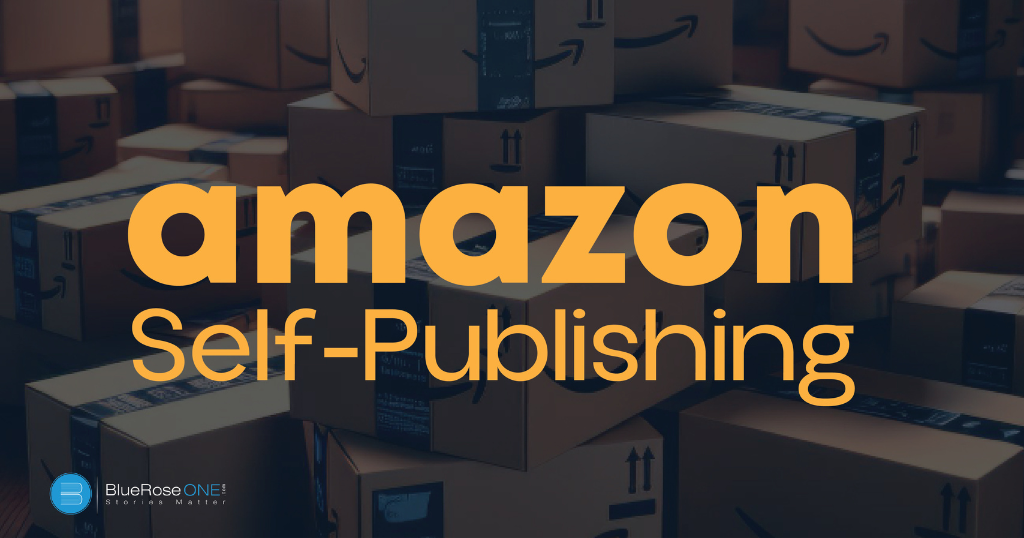
What is Amazon Self-Publishing: 8 Proven Steps for First-Timers
What is Self Publishing? Self-publishing is a ground-breaking method that allows authors to independently publish and disseminate their work without depending on established publishing organisations. This approach gives writers more influence over their creative processes, from text preparation to cover design and marketing techniques. Amazon Kindle Direct Publishing (KDP) is one of the primary platforms that has democratised self-publishing. What is Amazon Kindle Direct Publishing (KDP)? Amazon Kindle Direct Publishing (KDP) is a self-publishing platform that allows writers and independent publishers to distribute their written works in digital and print versions to a global audience. KDP, which was launched by Amazon, the world’s top online retailer, provides a simple interface for writers to upload, publish, and distribute their books. Authors may pick between Kindle eBooks and paperback versions, allowing them to cater to a wide range of reader tastes. KDP offers a variety of book features for formatting, cover design, and pricing, giving content authors complete creative flexibility. Read: How to Self-Publish an eBook and Sell It Online: A Comprehensive Guide The opportunity to earn royalties based on sales is one of the primary benefits of KDP, and writers may establish their own list pricing and make real-time adjustments to their work. The platform connects smoothly with Kindle devices and applications, making published works available to millions of users across the world. Furthermore, KDP makes it easier to enrol books in the Kindle Unlimited and Kindle Owners’ Lending Library programmes, which improves discoverability for keen readers who use these services. Amazon KDP has democratised the publishing business with its huge reach and simple publication procedure, allowing authors of various backgrounds and genres to share their tales with a global audience, promoting a vibrant and diverse literary environment in the digital age. You may also read: How to Write a Book Description That Grabs Readers 8-Steps to get your book published through Amazon Kindle Direct Publishing Publishing your book through Amazon Kindle Direct Publishing (KDP) is a straightforward process that empowers authors to bring their work to a global audience. Here’s a step-by-step guide to help you navigate the journey: Prepare Your Manuscript Create an Amazon KDP account Add a new title Upload your manuscript Design your cover Set your pricing and royalties Enroll in KDP select Publish your eBook Prepare Your Manuscript:Before you begin the publication process, you must guarantee that your work has been painstakingly edited and correctly prepared. A well-polished manuscript not only improves the overall reading experience, but it also plays an important part in obtaining good reader feedback. Engaging an editor to improve the language, eliminate typos, and improve coherence improves the overall quality of your work.Consider a reader who comes across a book that is riddled with grammatical faults and contradictions. This may divert their attention away from the story and leave a poor impression. A polished manuscript guarantees that your tale is not dominated by needless faults. Create an Amazon KDP account:Go to the Amazon Kindle Direct Publishing (KDP) website and sign in using your current Amazon account, or establish a new one if you don’t already have one. Your KDP account is the principal location for controlling many elements of your book, including its data, sales performance, and royalties. This step is critical for building your Amazon presence as a self-published author.Author Jane Smith, for example, chooses to self-publish her debut novel after finalising her manuscript. She goes to the Amazon KDP website, registers an account, and is now ready to begin the publishing process. Add a new title:Locate the option to “Create a Kindle eBook” under your KDP account and begin the process of bringing your book to life on the Kindle platform. Fill in the blanks with important information like the book title, author’s name, a captivating description, and relevant keywords. These particulars are critical to increasing the discoverability of your book on Amazon and ensuring that it reaches the intended audience.For example, John Doe, a nonfiction author, would use this stage to add his most recent personal finance advice to the Amazon catalogue. A well-chosen combination of keywords and an intriguing book description set the stage for potential readers to quickly locate and explore his work. Upload your manuscript:Begin your self-publishing adventure by uploading your revised manuscript to Amazon’s Kindle Direct Publishing (KDP). Accepted file types include.doc,.docx, and.mobi. KDP will automatically convert your text to Kindle format. By previewing your book on the platform, you can ensure that the formatting is right.For example, after finishing your mystery book manuscript, upload the.docx file to KDP. It is converted into an e-book format compatible with Kindle devices by the platform. Design Your Cover:Create an eye-catching cover that captures the spirit of your book and draws in potential readers. Amazon offers cover design tools, allowing you to create your own. You may also upload a professionally designed cover for a more polished appearance.Create a cover with the Eiffel Tower and a pair in love for a romantic story set in Paris. To create a romantic ambiance, choose bright colours. Set Your Pricing and Royalties:Determine your eBook’s list price and royalty percentage (35% or 70%). When determining rates, consider aspects such as book length, genre, and marketing approach. For publications priced within defined ranges, the 70% royalty option is available.Consider a competitive price of Rs. 200/- for a complete guide on digital marketing to attract a larger audience. Choose the 70% royalty option to increase your revenue per sale. Enrol in KDP Select (Optional): KDP Select is a programme given by Amazon Kindle Direct Publishing (KDP) that allows writers to obtain promotional incentives in exchange for exclusivity. By enrolling in KDP Select, writers agree to make their eBook only available on Kindle and remove it from other platforms for the duration of the membership term, which is normally 90 days. Access to promotional tools such as Kindle Countdown Deals and Free Book Promotions might potentially increase awareness and sales. The disadvantage is the exclusivity clause, which means authors cannot publish their eBooks through other channels such as…
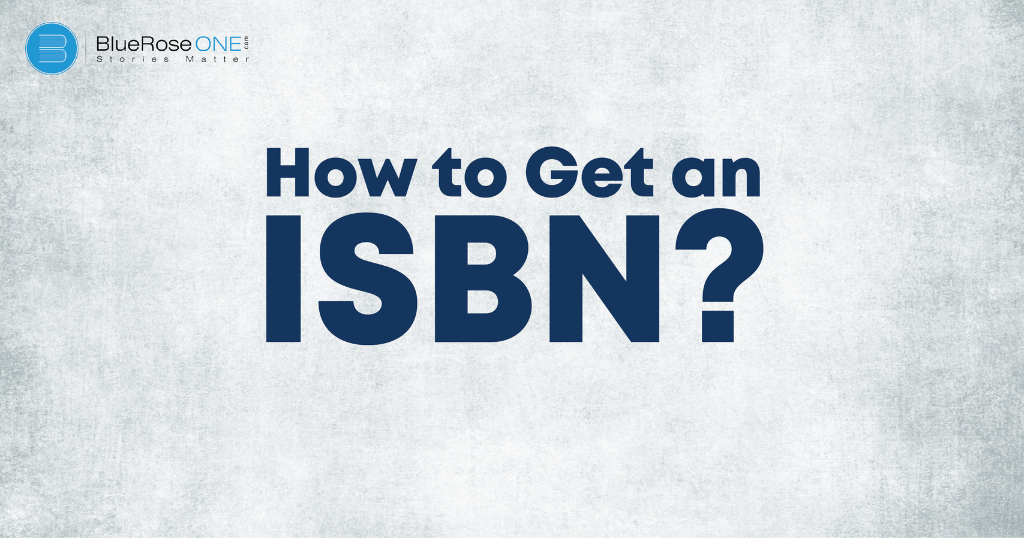
What is an ISBN number? Things to know about publishing industry!
Every being has their own separate identity and so do book. ISBN aka Internation Standard Book Number – is a 13-digit identification created expressly to differentiate books and comparable items on a worldwide scale. This alphanumeric designation is applied to monographic publications, which include stand-alone goods in print, audio, and electronic media. Read: A Step by Step Guide – How to Get an ISBN Number in India. The ISBN’s principal goal is to provide a standardised method of cataloguing and monitoring individual publications, allowing their worldwide recognition and accessibility across many platforms and marketplaces. Why is the importance of ISBN? The capacity to establish a standardised and internationally recognised method for cataloguing and tracking individual publications makes it necessary. The ISBN minimises misunderstanding and assures correct administration of many editions of a book, whether in print, audio, or electronic form, by providing a unique identification for each edition and medium. This global standard promotes efficient book trading and distribution by streamlining the ordering, selling, and inventory management processes for retailers, distributors, and libraries. ISBNs help books be found online by allowing correct listings on online platforms, search engines, and databases. They also play an important role in library cataloguing, supporting librarians in organising and finding books in their collections. An ISBN provides professional legitimacy to the work of writers and publishers by indicating that their publications are officially recognised and catalogued. The identifier also facilitates distinguishing between different formats and editions of a book, which is important for both vendors and purchasers looking for specific copies. Furthermore, ISBNs are essential for statistical research of book sales and industry trends, providing authors, publishers, and the larger publishing ecosystem with useful data. In essence, the ISBN is a cornerstone of the book business, helping to streamline information flow, provide worldwide accessibility, and contribute to the overall efficiency of book trade and dissemination. You may also: Negative Adjectives to Describe People: Examples and Meanings How can you apply for an ISBN as an independent author? Decide the Publishing Platform: If you are publishing through a traditional publishing house, they will typically handle the assignment of ISBNs for your book. If you are self-publishing or using a print-on-demand service, you might have the option to obtain an ISBN through the platform or purchase one independently. Find the ISBN Agency of your Country: In many countries, ISBNs are managed by a national agency. Find the agency in your country responsible for issuing ISBNs. In the United States, for example, Bowker is the official ISBN agency. Visit the ISBN Agency’s Website: Go to the website of the ISBN agency in your country. Most agencies provide detailed information and guidelines on obtaining an ISBN. Register for an Account: Some ISBN agencies require you to create an account before applying for ISBNs. Provide the necessary information, including your name, contact details, and, if applicable, your publishing company details. Provide Book Information: Once registered, you’ll need to provide specific details about your book, such as title, author, format (print or e-book), edition, language, and publication date. Eg., the title (“A Journey Beyond”), author (Jane Doe), format (print), edition (first edition), language (English), and publication date (xx-may-20xx). Pay the Fee (If Applicable): Depending on your country and the ISBN agency’s policies, there may be a fee associated with obtaining an ISBN. Be prepared to pay this fee online. Receive and Assign ISBNs: After completing the application process, you will be assigned a block of ISBNs. Each ISBN in the block can be assigned to a different edition or format of your book. Incorporate the ISBN into Your Book: Once you have your ISBN, incorporate it into the copyright page of your book. Include it in any metadata provided to retailers and distributors. Repeat the Process for Each Format: If you are publishing your book in multiple formats (e.g., print and e-book), you may need separate ISBNs for each format. You may also like: Archangels Names List: Meanings, Powers, and Symbolism What is the difference between ISBN and Barcode? Although separate, the International Standard Book Number (ISBN) and barcode are symbiotic aspects in the world of book printing and dissemination. An ISBN is a 13-digit unique identification provided to books that denotes certain editions or formats and is essential for worldwide cataloguing and tracking. It is often located on the copyright page and gives critical information for acquiring and recognising books worldwide. A barcode, on the other hand, is a machine-readable representation of data that is normally printed on the back cover next to the ISBN. It improves sales and inventory procedures, particularly in retail contexts. When a book is scanned at a point of sale, for example, the barcode is read and the matching ISBN is obtained, connecting to the book’s information in the database. The combination of ISBN and barcode guarantees rapid and precise book identification, allowing for seamless operations in publishing, distribution, and sales. They work together to ensure the smooth operation of the book business, from manufacture to the point of sale. Read: Learn How to Write and Publish a Leadership Book in 2024 – Complete Guide All in all, getting an ISBN (International Standard Book Number) is a critical step for authors, publishers, and independent writers looking to give their publications a worldwide identity. ISBN is significant because it serves as a standardised and internationally recognised mechanism for cataloguing and tracking individual publications, allowing for efficient book trading and distribution. Finding the proper publishing platform, locating the ISBN agency in your country, registering for an account, giving book data, paying any required costs, and inserting the issued ISBN into your book are all steps in the process of gaining an ISBN. Do ISBN expire? ISBN numbers do not have an expiration date and are thus indefinitely valid. Even if you have an ISBN from a long time ago, it is still usable, and you may use it without any problems. Do ISBN expire? An ISBN (International Standard Book Number) is a 13-digit number that identifies books, with each segment…

